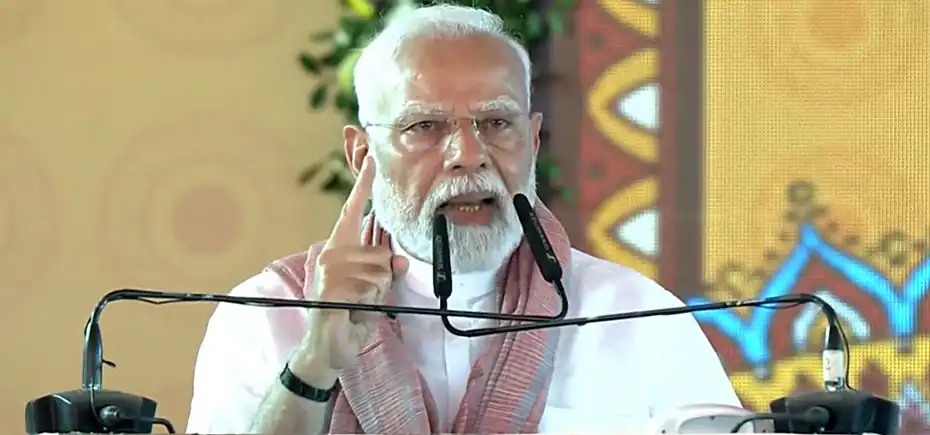“They will certainly pay. Whatever little land these terrorists have, it’s time to reduce it to dust. The willpower of 1.4 billion Indians will break the backbone of these terrorists.” -- PM Modi
"We are likely to see a strong response – one that signals resolve to both domestic audiences and actors in Pakistan. Since 2016 and especially after 2019, the threshold for retaliation has been set at cross-border or air strikes," military historian Srinath Raghavan told the BBC.
After the deadly Uri attack in September 2016, where 19 Indian soldiers were killed, India launched what it called "surgical strikes" across the de facto border - also known as the Line of Control (LoC) - targeting what it said were militant launch pads in Pakistan-administered Kashmir.
And in 2019, after at least 40 paramilitary personnel were killed in Pulwama, India hit an alleged militant camp in Balakot with airstrikes - its first such strike deep inside Pakistan since 1971.
Pakistan responded with air raids, leading to a dogfight and the brief capture of an Indian pilot. Both sides avoided full-scale war.
Two years later, in 2021, they agreed to an LoC ceasefire, which has largely held - despite recurring militant attacks in Indian-administered Kashmir.
Michael Kugelman, a foreign policy analyst, believes that the combination of high fatality levels and the targeting of Indian civilians in the latest attack "suggests a strong possibility of an Indian military response against Pakistan, if Delhi determines or merely assumes any level of Pakistani complicity".
What are India's options?
Covert action offers deniability but may not satisfy the political need to visibly restore deterrence, says Christopher Clary of the University at Albany in the US.
That leaves India with two possible paths, he notes.
First, the 2021 LoC ceasefire has been fraying, and Indian Prime Minister Narendra Modi could greenlight a return to cross-border firing.
Second, airstrikes or even conventional cruise missile strikes, like in 2019, are also on the table - each carrying the risk of a retaliatory spiral, as seen in the air skirmishes that followed then.
"No path is without risks. The US is also distracted and may not be willing or be able to assist with crisis management," Mr Clary, who studies the politics of South Asia, told the BBC.
One of the gravest risks in any India-Pakistan crisis is that both sides are nuclear-armed. That fact casts a long shadow over every decision, shaping not just military strategy but political calculations.
"Nuclear weapons are both a danger and a restraint - they force decision-makers on both sides to act with caution. Any response is likely to be presented as precise and targeted. Pakistan may retaliate in kind, then look for an off-ramp, says Mr Raghavan.
"We've seen this pattern in other conflicts too, like Israel-Iran - calibrated strikes, followed by efforts to de-escalate. But the risk is always that things won't go according to script."
The Muslim-majority state of Pakistan was born out of the partition of the Indian sub-continent in 1947, and has faced both domestic political upheavals and regional confrontations.
Created to meet the demands of Indian Muslims for their own homeland, Pakistan was originally made up of two parts.
The break-up of the two wings came in 1971 when the Bengali-speaking east wing seceded with help from India to become the independent state of Bangladesh.
Development in Pakistan has been hampered by Islamist violence and economic stagnation, and relations with its key neighbours India and Afghanistan are often fraught.
But this time, the victims were not soldiers or security personnel, making the situation even more politically charged.
“India cannot twiddle its thumbs. Once the escalatory ladder is revved up, it can go out of hand,” said the security analyst. “You cannot read Modi, you can’t predict the man. He is very muscular,” he added.
What heightens the political dynamics of the Kashmir attack is the timing – during a high-level US visit. The US vice- president, JD Vance, on his first official trip to India, emphasised strengthening defence ties and praised India as a strategic partner.
In 2002, India and Pakistan came very close to full-scale war after a terrorist attack on the Indian parliament in December 2001 that New Delhi blamed on Pakistan-based militant groups. The US played a key diplomatic role in de-escalating the crisis.
“The messaging we are seeing from senior officials points to the US being fully behind India – and that it would not stand in the way of how India will respond,” Kugelman said.




There is no question of allowing Pakistanis to have their say like their Army Chief Munir openly justified two nations theory -- Mrs Shikha Chowdhury
ReplyDelete